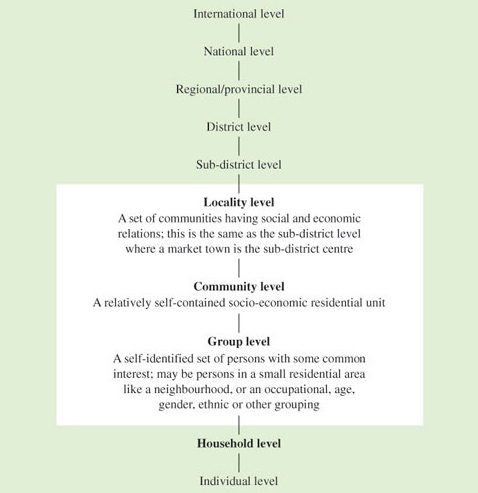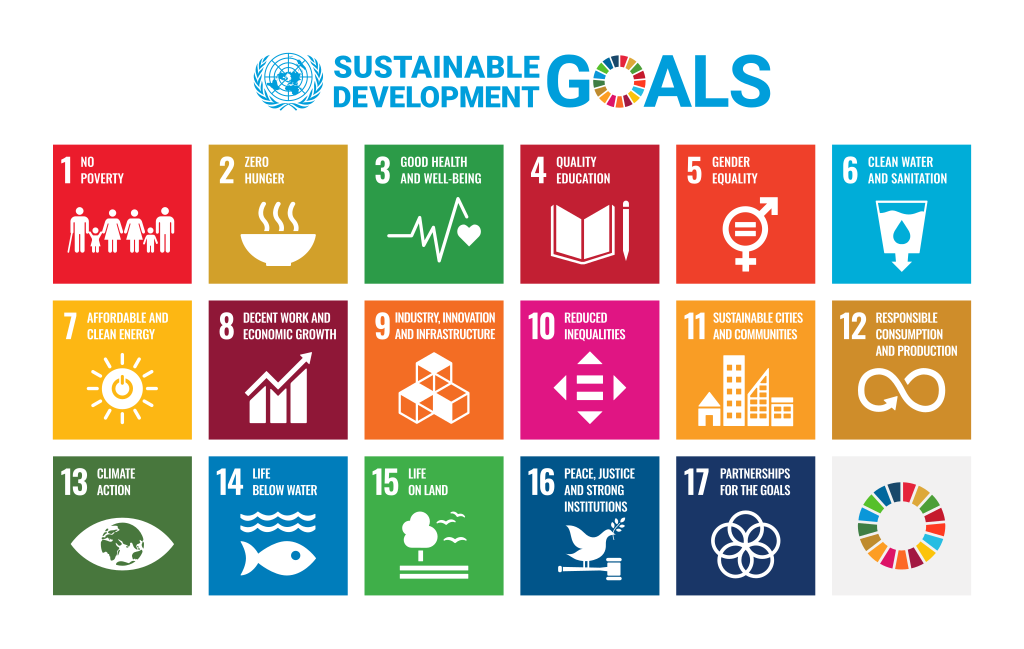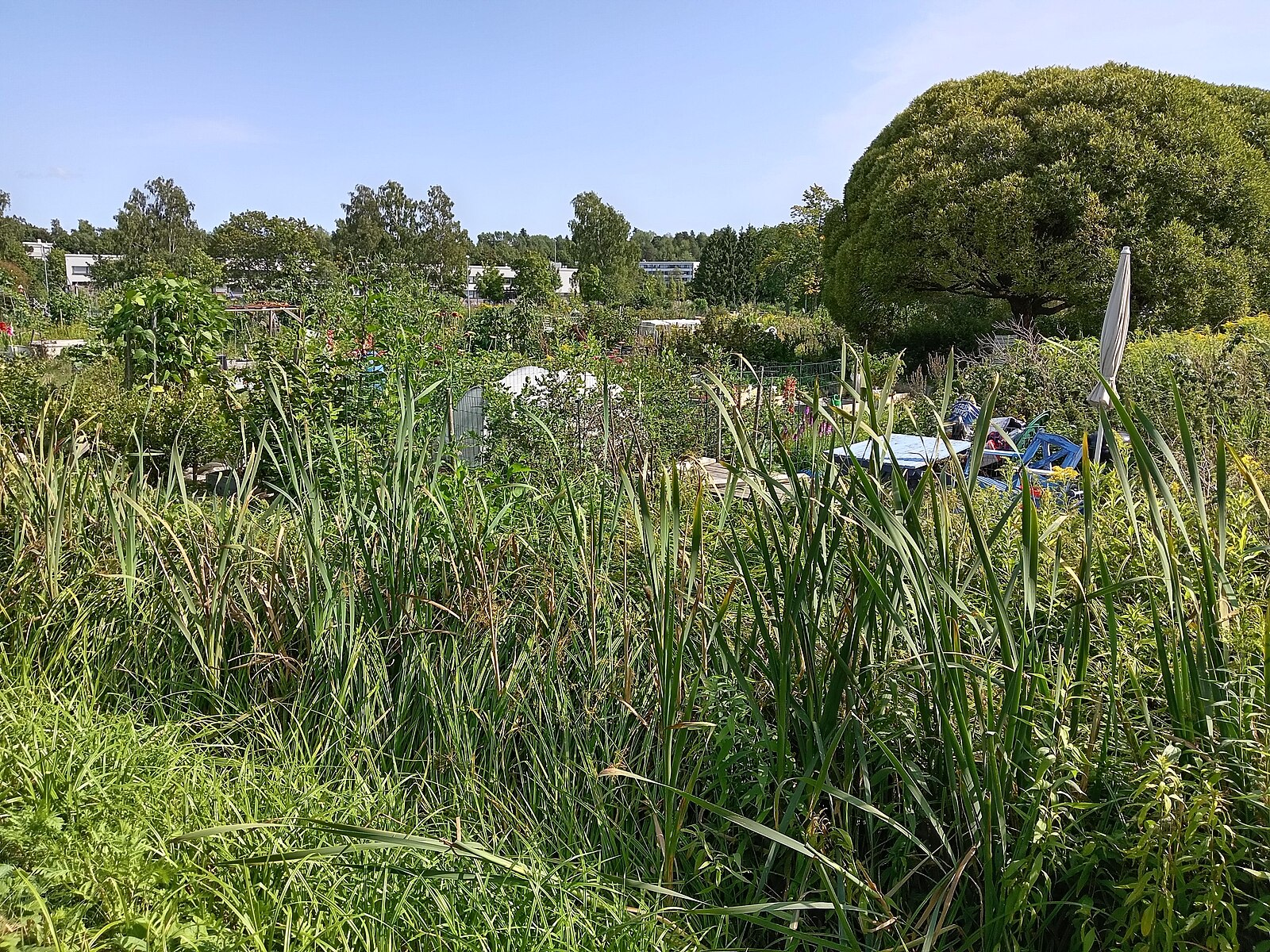IB Syllabus focus:
‘Action spans individual to global (personal choices, businesses, communities, cities, nations, international). The UN SDGs offer a shared framework with uses (coordination, universality) and limits (top-down design, data gaps, local relevance).’
Sustainability requires cooperation at all levels of society. From individual actions to international frameworks, scales of action highlight how change can occur across interconnected systems.
Scales of Action
Individual Level
Individuals play a critical role in shaping environmental outcomes through personal choices such as reducing consumption, recycling, or shifting diets. Even small-scale behaviours, when aggregated, can drive cultural and policy change.
Energy use: turning off lights, using renewable tariffs.
Transport: cycling, public transport, reduced car dependency.
Consumption: buying local produce, reducing single-use plastics.
These choices not only affect immediate environmental impacts but also influence businesses and policymakers through demand and public opinion.
Business and Corporate Level
Businesses have the capacity to drive sustainability through corporate responsibility and innovation. Their scale of action includes:
Reducing emissions in production and supply chains.
Designing sustainable products and services.
Reporting through sustainability frameworks such as ESG (Environmental, Social, Governance).
As major economic actors, businesses can either accelerate sustainability transitions or resist change when profit conflicts with ecological goals.
Community and Local Scale
Communities and cities often become testing grounds for grassroots sustainability initiatives. Local governments and neighbourhood organisations can influence behaviours and create supportive infrastructure.
Examples include:
Community gardens improving local food resilience.
Urban transport networks promoting cycling and walking.
Local waste management schemes introducing composting and recycling.
These local actions directly address social equity and environmental health in ways tailored to cultural and demographic needs.
National Level
Nations act through policy frameworks, regulation, and law-making. Governments can implement strategies such as:
Carbon taxes or emissions trading schemes.
Subsidies for renewable energy.
Legal protections for biodiversity and ecosystems.
At this scale, governments set the pace of national adaptation and mitigation, balancing economic stability, social development, and environmental protection.
International and Global Level
The most extensive scale involves international agreements and frameworks that coordinate sustainability efforts across borders. Examples include:
The Paris Agreement on climate change.
The Montreal Protocol to reduce ozone-depleting substances.
The United Nations Sustainable Development Goals (SDGs).
Global collaboration is necessary to address transboundary challenges such as climate change, ocean acidification, and biodiversity loss.

This diagram displays decision-making levels from individual to international and highlights the subset of ‘local institutions’. It helps students locate actions and policies at the appropriate scale, and to see how local and higher-level decisions interact. (Includes a finer ten-level breakdown than the IB wording but serves the same purpose.) Source.
The UN Sustainable Development Goals (SDGs)
Definition
Sustainable Development Goals (SDGs): A set of 17 global goals adopted by the United Nations in 2015, aimed at ending poverty, protecting the planet, and ensuring prosperity for all by 2030.
The SDGs are an attempt to create a shared global framework for sustainability. They integrate environmental, social, and economic aspects under a unified agenda.
The UN Sustainable Development Goals (SDGs) offer a shared framework to coordinate action across scales.

The 17 Sustainable Development Goals form a universal framework used by governments, cities, businesses and communities to align action and monitor progress. The grid shows each goal with its official icon and colour standard for consistent communication across scales. Source.
Uses of the SDGs
The SDGs are widely recognised for their coordination and universality. They provide:
A common language for governments, NGOs, and businesses.
Indicators for measuring progress across multiple dimensions.
A unifying agenda for international cooperation.
By linking scales of action, they align efforts from individuals up to global institutions.
Limits of the SDGs
Despite their strengths, the SDGs also face challenges:
Top-down design: Developed centrally, sometimes failing to account for local priorities or cultural contexts.
Data gaps: Accurate monitoring is difficult in regions lacking infrastructure for data collection.
Local relevance: Goals may seem abstract or unattainable for communities struggling with immediate needs.
These weaknesses highlight the tension between global universality and local specificity.
Linking Scales of Action with the SDGs
Individual to Community
Individual behaviour, such as reducing waste, contributes to broader SDG targets like Responsible Consumption and Production (SDG 12). When adopted by communities, these actions scale into measurable progress.
Community-level initiatives link local priorities with SDG targets and often catalyse behaviour change.

A communal urban garden in Helsinki exemplifies community-level environmental action managed by residents. Such initiatives support SDG 11 (Sustainable Cities and Communities) and SDG 3 (Good Health and Well-being) by improving liveability, social cohesion and access to green space. Source.
Business to National
Corporate initiatives can support government targets on Climate Action (SDG 13) or Affordable and Clean Energy (SDG 7). National legislation can further guide corporate compliance and incentivise green practices.
International to Local
International agreements like the SDGs influence national policy, which then cascades into local implementation. For example:
Global level: SDG framework sets renewable energy targets.
National level: Government subsidises solar panel installations.
Local level: Communities adopt renewable energy cooperatives.
Individual level: Households install solar systems.
This illustrates a multiscalar chain of action linking personal choices to global frameworks.
Interdependence of Scales
No single scale of action is sufficient. Systemic change emerges when actions reinforce one another across levels:
Individual efforts shape markets.
Businesses respond with innovation.
Governments regulate and incentivise change.
International frameworks coordinate and hold actors accountable.
The success of sustainability depends on recognising that all scales are interconnected. A weakness at one scale can undermine progress at others, while strength in one can accelerate momentum globally.
FAQ
Individual choices, such as reducing energy use or avoiding single-use plastics, create demand for sustainable goods and services.
When millions adopt similar habits, businesses respond with new products, and governments adjust policies. This bottom-up momentum can shape national commitments and influence global agreements like the Paris Agreement.
Communities provide a direct link between global goals and local realities. They adapt broad frameworks into practical, culturally relevant actions.
Examples include:
Local food cooperatives improving SDG 2 (Zero Hunger).
Neighbourhood recycling schemes supporting SDG 12 (Responsible Consumption).
Urban green spaces promoting SDG 11 (Sustainable Cities).
Cities act as intermediaries, implementing national sustainability policies while tailoring them to local needs.
They often pioneer innovations in transport, energy, and housing that later influence national or international strategies. Large urban centres also collaborate globally through networks like C40 Cities, linking city-level action directly to international frameworks.
The SDGs provide benchmarks that businesses use to assess environmental and social impact.
By aligning operations with SDG targets, companies can attract investors, improve reputation, and meet regulatory expectations. This reduces risks while offering opportunities to innovate in renewable energy, sustainable supply chains, and ethical labour practices.
SDGs can appear abstract or distant from everyday struggles in smaller communities.
Challenges include:
Limited financial resources to implement changes.
Lack of reliable data to track progress.
Cultural differences making global targets feel less relevant.
Local adaptation and community participation are essential for translating SDGs into practical and effective action.
Practice Questions
Question 1 (2 marks)
Identify two different scales of action in sustainability and provide one example of each.
Mark scheme:
1 mark for correctly identifying a valid scale of action (e.g., individual, community, business, national, international).
1 mark for providing a relevant example of that scale (e.g., individual: reducing plastic use; international: Paris Agreement).
Question 2 (5 marks)
Explain how the United Nations Sustainable Development Goals (SDGs) can help coordinate sustainability actions across different scales, and outline two limitations of using the SDGs as a framework.
Mark scheme:
Up to 3 marks for explaining coordination across scales:
1 mark for linking SDGs to individuals, communities, businesses, governments, or international bodies.
1 mark for describing how SDGs provide a shared framework or common language.
1 mark for linking to monitoring/progress measurement.
Up to 2 marks for outlining limitations:
1 mark for identifying a valid limitation (e.g., top-down design, data gaps, lack of local relevance).
1 mark for explaining why this limitation reduces effectiveness.

